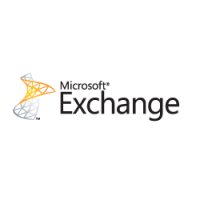 Remove UM Language Packs For Service Pack Upgrade
Remove UM Language Packs For Service Pack Upgrade
ISSUE
You are trying to install a service pack on Exchange 2010 Unified Messaging server and receive an error that you need to remove certain language packs before the service pack can be installed.
APPLIES TO
Microsoft Exchange Server 2010
CAUSE
This issue is caused by the fact that the service packs each have their own language packs for unified messaging, as a result, you must remove older versions before installing a newer service pack. Once the newer service pack is installed, you can re-install the correct, updated versions of the language pack(s) you removed.
RESOLUTION
Removal of language packs for unified messaging can be accomplished by following these steps – remove what the new service pack installer is telling you to remove:
- Insert your Exchange 2010 CD, or better, get the current service pack you are running and extract it to a folder (for example: c:\exchsp1).
- From an “ELEVATED COMMAND PROMPT“, run the following command from the directory you extracted the SP to or from the drive letter of the disc containing your Exchange 2010 installer: Setup /RemoveUmLanguagePack:xx-xx
Where xx-xx is the language country code you wish to remove. Repeat the above command for any additional language pack(s) you need to remove.
NOTE: do not remove EN-US (Americas/English) for US-based deployments.
Possible xx-xx combinations reference:
- CA-ES (Catalan – Catalan)
- DA-DK (Danish – Denmark)
- DE-DE (German – Germany)
- EN-AU (English – Australia)
- EN-CA (English – Canada)
- EN-GB (English – United Kingdom)
- EN-IN (English – India)
- EN-US (English – United States)
- ES-ES (Spanish – Spain)
- ES-MX (Spanish – Mexico)
- FI-FI (Finnish – Finland)
- FR-CA (French – Canada)
- FR-FR (French – France)
- IT-IT (Italian – Italy)
- JA-JP (Japanese – Japan)
- KO-KR (Korean – Korea)
- NB-NO (Norwegian – Norway)
- NL-NL (Dutch – The Netherlands)
- PL-PL (Polish – Poland)
- PT-BR (Portuguese – Brazil)
- PT-PT (Portuguese – Portugal)
- RU-RU (Russian – Russia)
- SV-SE (Swedish – Sweden)
- ZH-CN (Chinese – China)
- ZH-HK (Chinese – Hong Kong SAR)
- ZH-TW (Chinese – Taiwan)
HOW TO USE
Follow the directions shown under the ‘resolution’ tab of this article for a solution.
Download new language packs for 2010 Exchange, Unified Messaging here:
- For 2010 SP1 : [Exchange 2010 SP1 UM]
- For 2010 SP2 : [Exchange 2010 SP2 UM]
- For 2010 SP3 : [Exchange 2010 SP3 UM]
DISCLAIMER
Use of this fix has proven helpful to many, however, DNS Texas is not responsible for any issues that may arise. Use at your own risk.
![]()
